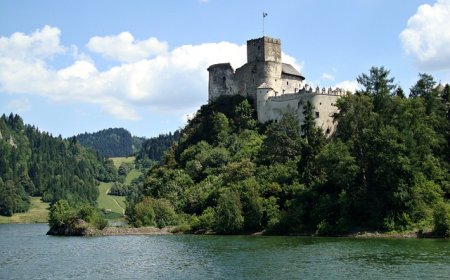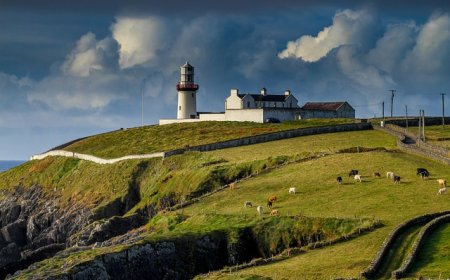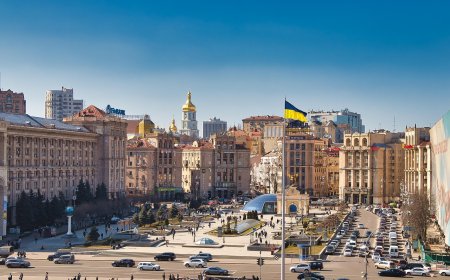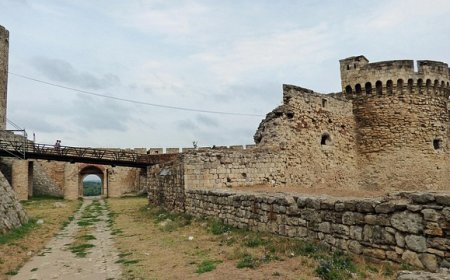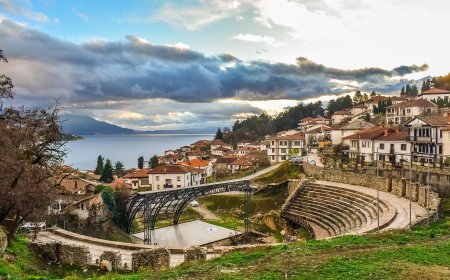Denmark: Geography, Culture, and History for Students
Discover Denmark’s geography, Viking past, modern culture, and traditions in this student-friendly article. Learn about Copenhagen, Danish life, and design.
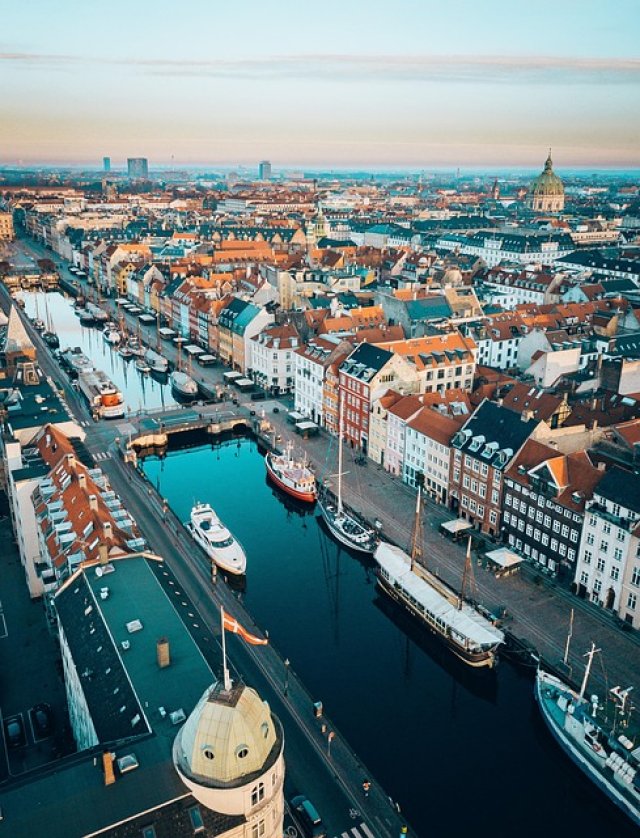
🇩🇰 Denmark: A Kingdom of Castles, Coasts, and Creativity
🗺 Introduction
Denmark is a small but mighty country in Northern Europe, known for its fairy tale castles, Viking heritage, and innovative designs. As one of the world’s happiest nations, Denmark combines old-world charm with modern living. It is part of Scandinavia, along with Sweden and Norway, and plays an important role in both European history and global innovation.
In this article, you'll explore Denmark’s geography, cities, people, traditions, and contributions to the world. From the birthplace of author Hans Christian Andersen to a leader in green energy, Denmark is a land of both imagination and action.
🌍 Geography and Location
Denmark is located on a peninsula called Jutland and includes over 400 islands, of which about 70 are inhabited. It borders Germany to the south and is connected to Sweden by the Øresund Bridge, one of the longest bridges in Europe. Denmark is surrounded by the North Sea and the Baltic Sea, giving it a long and varied coastline.
The land is mostly flat, with rolling hills, sandy beaches, and low cliffs. There are no high mountains, which makes Denmark a great place for cycling. It has many rivers, lakes, and fertile farmland, as well as protected areas for birds and wildlife.
The climate in Denmark is temperate, with cool winters, mild summers, and plenty of wind. The wind is so strong in some areas that Denmark has become a global leader in using wind power for electricity.
🏙 Cities and Regions
The capital city of Denmark is Copenhagen, located on the island of Zealand. Copenhagen is a blend of historic buildings and modern innovation. It is famous for its colorful harbor called Nyhavn, the Little Mermaid statue, and Tivoli Gardens, one of the oldest amusement parks in the world.
Copenhagen is also a center of sustainable living, where many people ride bikes, eat organic food, and live in energy-efficient homes. The city includes royal palaces, top universities, and exciting museums.
Other important cities include:
- Aarhus, a cultural and university city in Jutland
- Odense, the birthplace of Hans Christian Andersen
- Aalborg, known for its Viking history and modern art scene
Denmark is divided into five regions, each with its own unique culture, scenery, and traditions.
👨👩👧👦 People, Language, and Culture
Denmark has a population of about 5.9 million people. The official language is Danish, but many people also speak English, especially in schools and cities. Danish is part of the Germanic language family, similar to Swedish and Norwegian.
Danish society is known for being equal, open-minded, and trusting. People often value personal freedom, kindness, and a simple, comfortable lifestyle called “hygge.” Hygge is the feeling of coziness, warmth, and togetherness, especially during long winter nights.
Denmark is a constitutional monarchy, which means it has a king or queen, but the government is run by elected officials. The royal family is popular, and the current monarch, King Frederik X, plays an important ceremonial role.
🍽 Danish Food and Traditions
Danish food is hearty and based on local ingredients like rye bread, fish, pork, potatoes, and root vegetables. While traditional meals were once very simple, today Danish cuisine is also known for creativity and fresh flavors.
Popular Danish foods include:
- Smørrebrød, open-faced sandwiches with a variety of toppings
- Frikadeller, Danish meatballs served with potatoes and gravy
- Rødgrød med fløde, a red berry dessert with cream
- Wienerbrød, the Danish pastry (commonly called a “Danish”)
- Rugbrød, dense rye bread served with many meals
Traditions include celebrating Christmas with lights, songs, and homemade decorations, and Midsummer with bonfires and folk songs. Danes also enjoy Fastelavn, a carnival-like holiday where children dress up and play games.
🏛 History of Denmark
Denmark’s history goes back thousands of years, but one of its most famous periods is the Viking Age (about 800–1050 CE). Danish Vikings were known for exploring, trading, and settling across Europe, including parts of England, France, and Ireland.
After the Viking period, Denmark became a Christian kingdom and later part of the Kalmar Union with Sweden and Norway. The Danish monarchy has existed for over 1,000 years, making it one of the oldest in the world.
During the 1800s and early 1900s, Denmark lost some of its territories but stayed neutral during many European conflicts. It remained neutral in World War I but was occupied by Germany during World War II. After the war, Denmark joined the United Nations, NATO, and later the European Union.
Today, Denmark is known for its strong democracy, peaceful politics, and commitment to human rights and sustainability.
🌿 Nature and Environment
Nature is an important part of life in Denmark. People enjoy going to the beach, camping, fishing, and hiking. Although Denmark doesn’t have tall mountains, its coasts, islands, and forests provide plenty of space for outdoor fun.
Wildlife includes foxes, deer, hares, and many types of birds. In coastal areas, you can find seals, and sometimes even porpoises swimming near the shore.
Denmark is a world leader in clean energy. Nearly half of the country’s electricity comes from wind turbines, and it plans to become carbon neutral by 2050. Recycling, bike travel, and green architecture are part of everyday life.
🧠 Why Denmark Matters
Denmark may be a small country, but it has made a big impact. From Viking explorers to modern-day designers and scientists, the Danes have helped shape art, science, and global cooperation. Danish values of equality, trust, and creativity are shared in schools, businesses, and daily life.
Denmark is also famous for inventions like Lego and for authors like Hans Christian Andersen, whose fairy tales have been read around the world. With its smart cities and love for nature, Denmark offers a model for how to live well in a changing world.
📚 Vocabulary List
| Word | Definition |
|---|---|
| Jutland | The large peninsula that makes up mainland Denmark |
| Hygge | A Danish word meaning cozy, comfortable, and pleasant living |
| Smørrebrød | Traditional Danish open-faced sandwiches with various toppings |
| Monarchy | A country ruled by a king or queen |
| Sustainability | The practice of using resources in a way that protects the environment |
| Kalmar Union | A historical union between Denmark, Norway, and Sweden |
| Wind turbine | A machine that uses wind to produce electricity |
| Fastelavn | A Danish holiday where children dress in costumes and celebrate like a carnival |
✨ Fun Facts About Denmark
Denmark is the home of Lego, one of the most popular toys in the world.
The Danish flag, called the Dannebrog, is the oldest national flag still in use.
Hans Christian Andersen wrote fairy tales like The Little Mermaid and The Ugly Duckling.
Copenhagen’s harbor is clean enough to swim in!
Danish people ride bikes more than they drive cars in many cities.
👧🧒 Kid-Friendly Summary
Denmark is a happy, cozy country full of bikes, castles, and cool traditions. People there love riding bikes, eating open-faced sandwiches, and relaxing with family and friends. Vikings came from Denmark, and today it's one of the cleanest, greenest places in the world. With fairy tales, Lego bricks, and lots of beaches, Denmark is a fun place to learn about!
🧠 Interactive Quiz: How Well Do You Know Denmark?
1. What is the capital of Denmark?
A) Oslo
B) Copenhagen
C) Stockholm
D) Reykjavik
2. What is “hygge”?
A) A Viking ship
B) A holiday
C) A cozy, comfortable feeling
D) A food
3. What toy was invented in Denmark?
A) Play-Doh
B) Lego
C) Barbie
D) Rubik’s Cube
4. What are “smørrebrød”?
A) Danish pastries
B) Viking helmets
C) Open-faced sandwiches
D) Flags
5. What kind of energy does Denmark use a lot of?
A) Coal
B) Wind
C) Oil
D) Gas


















































